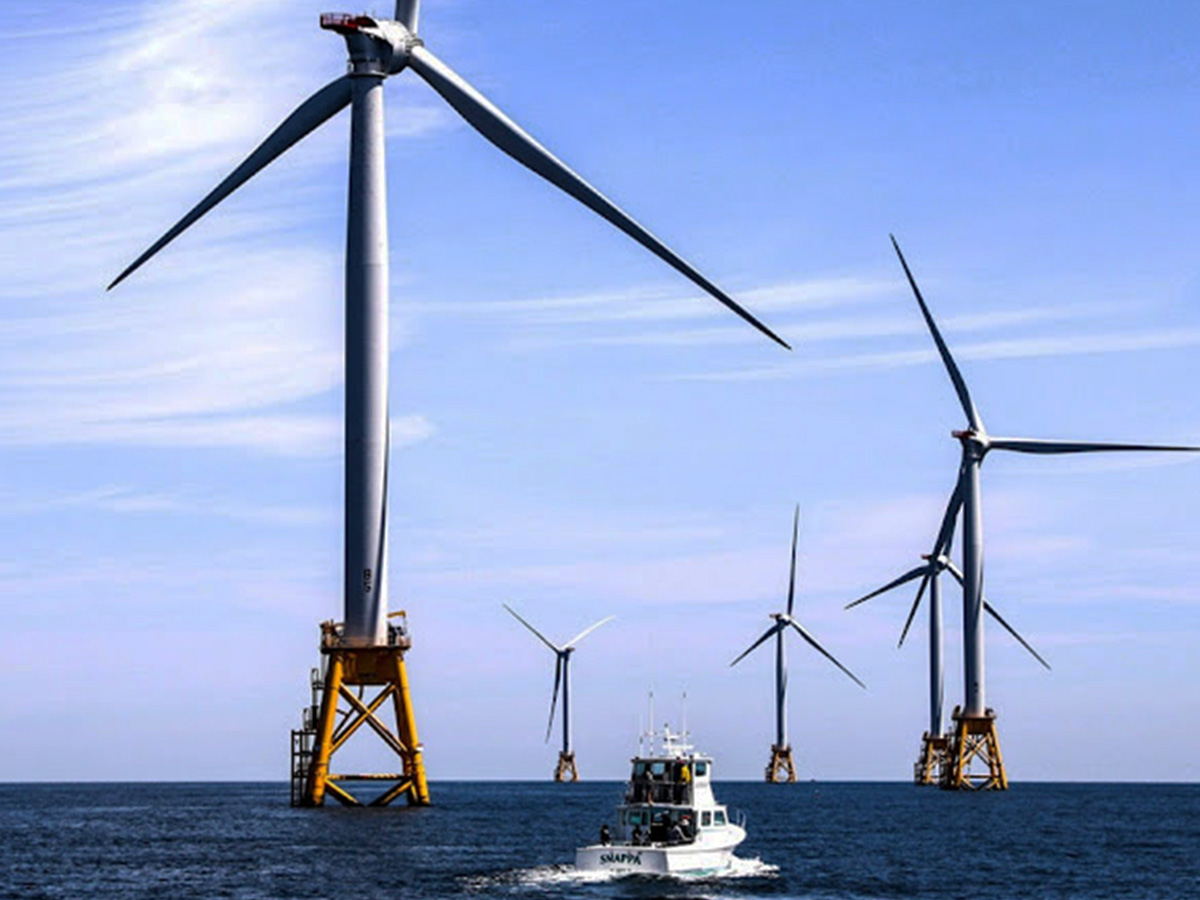Hydroelectric Dam in Uruguay
The issues of climate change sometimes seem so large and intractable that many people feel like there is nothing they can do and throw their hands in the air in hopelessness. However, some other countries have managed to almost completely convert their energy systems from ones like those found in the Unites States to nearly 100% sustainable systems in less than two decades. One such example is the South American country of Uruguay.
In 2005, the country’s energy matrix was heavily reliant on fossil fuels, with petroleum accounting for over 90% of electricity generation. However, by 2023, Uruguay now generates over 98% of its electricity from renewable sources; primarily wind and hydropower. How was this radical shift achieved and what lessons are there for other communities and countries that want to follow in their footsteps?

Wind Farm From Block Island, Rhode Island
This shift to renewable energy has been driven by a number of factors including government policy, technological advancements, and public support. In 2006, the Uruguayan government launched its National Energy Policy, which set ambitious targets for renewable energy development. The policy included a number of incentives for renewable energy projects, such as feed-in tariffs and competitive bidding mechanisms.
In a recent interview on NPR, particle physicist Ramon Mendez Galain described how he was intrigued by the problem of meeting Uruguay’s energy needs for growth. He looked at the problem from a scientific perspective, and since the country did not have many coal or gas reserves, concluded that this windy and mountainous country would do better by harnessing these sources to create wind and hydro-electric energy. Sometime after publishing the paper, he got a call from the country’s president asking him to leave his job as a physicist and taking on the role of the National Director of Energy. After two weeks’ consideration, he agreed to take on this adventure not knowing where it would lead.

UPM Mill in Uruguay
Working closely with the government and legislature to pass new laws (like stating wind is a communal resource), Dr. Mendez Galain started to see the conversion of the Uruguay economy on a much faster basis than he originally thought was possible. The government invested heavily in renewable energy research and development. As a result, Uruguay has become a world leader in wind energy technology and is now home to some of the largest and most efficient wind farms in the world.
Public support for renewable energy has also been a key factor in Uruguay’s success. A majority of Uruguayans support the transition to renewable energy, and there is a strong public awareness of the benefits of renewable energy, such as reduced pollution and climate change mitigation. The conversion of Uruguay’s energy production to a more sustainable program has had a number of positive benefits. The country has reduced its reliance on imported fossil fuels, which has saved it billions of dollars. Uruguay has also reduced its greenhouse gas emissions, and it is now one of the cleanest countries in the world in terms of its energy mix.

Uruguay 30MW Solar Farm
Additionally, the renewable energy sector has created jobs and boosted the Uruguayan economy. The country is now a global exporter of renewable energy technology and expertise. Here are some specific examples of how Uruguay has converted its energy production to a more sustainable program:
- Wind energy: Uruguay has become a global leader in wind energy development. The country has over 60 wind farms in operation, with a total installed capacity of over 3,000 MW. Wind energy now accounts for over 40% of Uruguay’s electricity generation.
- Hydropower: Hydropower is another important renewable energy source for Uruguay. The country has a number of large hydroelectric dams, which provide over 30% of Uruguay’s electricity generation.
- Solar energy: Solar energy is also playing an increasingly important role in Uruguay’s energy matrix. The country has a number of solar farms in operation, and it is also encouraging the installation of rooftop solar panels.
- Biomass energy: Biomass energy, such as wood and agricultural waste, is also used to generate electricity in Uruguay. Biomass power plants account for over 10% of Uruguay’s electricity generation.

Biomass Diagram
Uruguay is also investing in new renewable energy technologies, such as offshore wind and green hydrogen. As a result, the country is now well-positioned to continue its transition to a more sustainable energy future as new technologies emerge.
Uruguay’s success in converting its energy production to a more sustainable program provides a number of lessons for other countries. First, it is important to have a clear and ambitious government policy in place. Uruguay’s National Energy Policy has been a key driver of the country’s renewable energy transition.
Second, it is important to invest in renewable energy research and development. Uruguay has made significant investments in wind energy research, which has helped the country to become a world leader in this technology.
Third, it is important to build public support for renewable energy. Uruguay has a strong public awareness of the benefits of renewable energy, which has helped to create a favorable environment for renewable energy development.
Finally, it is important to create a supportive regulatory environment for renewable energy projects. Uruguay has a number of incentives in place for renewable energy projects, such as feed-in tariffs and competitive bidding mechanisms.

Uruguay UPM Pulp Mill
Admittedly, Uruguay is a small country of only 3.5 million people, and converting the energy grids of larger countries like the United States will be far more complex. But, by following Uruguay’s example, other countries can also make the transition to a more sustainable energy future. Uruguay has shown it is possible and so the other countries of the world must take up the banner of creating more sustainable futures for their people too, while there is still time to do so.
Ross Cann, RA, AIA, LEED AP, is an author, historian, teacher and practicing architect living and working in Newport, RI. He holds degrees in Architecture and Architectural History from Yale, Cambridge, and Columbia Universities.
